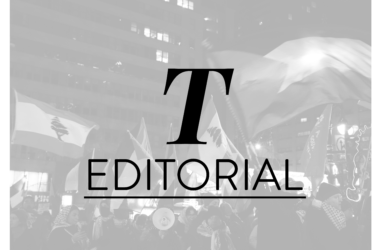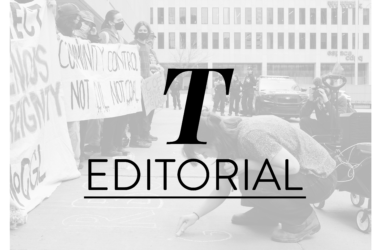The Société de transport de Montréal’s (STM) recent decision to close a major entrance to the Atwater metro station until April 2025 exemplifies Montreal’s unempathetic approach toward its most vulnerable residents. This entrance has long served as a crucial warming space for unhoused individuals during Quebec’s harsh winters. The STM’s vague justification—citing “safety concerns” and “undesirable behaviour”—thinly veils what housing advocates identify as a calculated strategy of displacement for unprotected populations. This closure comes at a critical time when weather forecasts predict an unusually severe winter and shelters for unhoused individuals consistently operate beyond capacity.
Enacting this closure for the year’s coldest months is particularly cruel. While construction workers are deemed unable to work outside during extreme cold, unhoused individuals are expected to survive in these same conditions—a double standard that normalizes the notion that some members of our community deserve essential protection while others do not.
Such institutionalized indifference to the safety of unhoused individuals emboldens a disturbing pattern in urban policy, where public spaces increasingly incorporate hostile architecture—from divided benches to spiked surfaces—designed to exclude rather than protect unhoused individuals. By enacting policies that prioritize pushing vulnerable people out of sight rather than actively addressing the crisis, Montreal officials avoid accountability for the housing crisis by making it invisible to those privileged enough to ignore it.
The consequences of such policies extend far beyond immediate displacement. Unhoused individuals may resort to desperate measures to survive the deadly winter months, from increased alcohol consumption to deliberately seeking arrest and jail time, thus further obstructing their paths to economic stability. Moreover, the health implications of prolonged exposure to extreme cold overwhelm an already strained healthcare system. Rather than addressing the root causes of this crisis through housing solutions and accessible public spaces, Montreal treats its unhoused population as a public hindrance to be removed rather than members of our community deserving protection and care. This stigmatization becomes self-fulfilling: The more unwelcoming we make public spaces, the more we reinforce the dangerous narrative that unhoused people themselves—rather than the systems that failed them—are the problem.
This structural breakdown highlights the entanglement of housing instability with entrenched systemic neglect of marginalized communities. Although Indigenous peoples make up just 0.6 per cent of Montreal’s population, they represent a staggering 10 per cent of the unhoused population—a direct consequence of generations of governmental destruction of Indigenous social structures. Other marginalized groups, including 2SLGBTQIA+ individuals, and those with mental illness or disabilities face disproportionate rates of housing insecurity due to institutionally ingrained barriers and discrimination.
The McGill community cannot passively observe these public policy failures. The Milton-Parc neighbourhood, where many students reside alongside large numbers of unhoused people, yet tend to actively ignore their existence, starkly illustrates our direct connection to this crisis. We must acknowledge how our presence drives rising rents and gentrification, directly contributing to housing instability in the area. Such recognition demands more than passive awareness—it requires active engagement in advocating for holistic housing solutions to address the very crisis our presence perpetuates.
McGill’s own practices—such as maintaining a reliance on the Service de Police de la Ville de Montréal on campus, disproportionately targeting Black, Indigenous, and other people of colour, and preserving physical barriers that segregate our campus from the broader Montreal community—mirror the city’s hostile approach. As members of this community, we must recognize our role both in exacerbating these crises, and in our capacity to challenge and transform them.
The solution begins with shifting narratives and approaches. Instead of treating unhoused individuals as problems to be solved, we must recognize them as valued community members. Montreal must prioritize evidence-based solutions like safe consumption sites and legislation ensuring safe and affordable housing, while the STM must reverse hostile policies that endanger lives. McGill can lead by example—by reconsidering how spaces like the Royal Victoria Hospital, which was used as a shelter for the unhoused, are being converted into campus infrastructure, supporting student initiatives addressing food insecurity, and fostering meaningful dialogue that reckons with McGill’s role in harming unhoused populations. Individual actions, from supporting local organizations to challenging stigmatizing language, work to dismantle unempathetic precedents that value property over people, and appearances over humanity.









